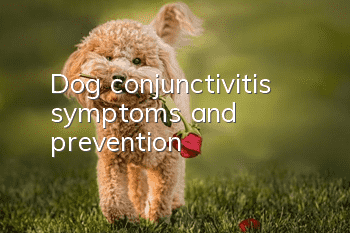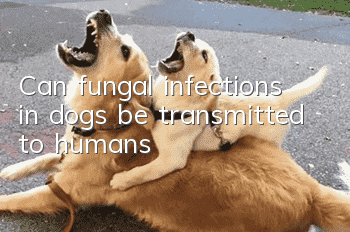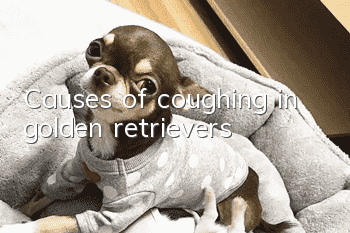Dog conjunctivitis symptoms and prevention

There are many types of eye diseases in dogs. Of these, conjunctivitis is the most common. What are the symptoms if your dog has conjunctivitis? And how to treat your dog?
Beagle
Corresponding symptoms of conjunctivitis in dogs
Conjunctivitis can be divided into three types: acute conjunctivitis, chronic conjunctivitis, and purulent conjunctivitis.
Acute conjunctivitis: mainly conjunctival congestion in the palpebral conjunctiva and fornix. For example, when the inflammation reaches the bulbar conjunctiva, the inflammatory reaction is strong, and a small amount of serous, purulent or even pseudomembranous secretions can be seen, the conjunctiva is swollen and painful, and the palpebral fissures are narrowed or atretic.
Chronic conjunctivitis: papillae and follicles form on the surface of the conjunctiva, the swelling is not obvious, and it lacks luster. Bulbar conjunctivitis sicca caused by decreased tear secretion, manifesting as blepharospasm.
Purulent conjunctivitis: Eczema occurs on the eyelid skin, and the dog will feel itchy. The long course of the disease can cause corneal opacity. If your dog’s eyes are itchy, try not to let your dog scratch them to avoid infection.
Treatment methods for dog conjunctivitis
1. When acute conjunctivitis is severely congested, wash your eyes with 3% boric acid solution or 0.1% Rivanol solution, apply cold compress, and apply anti-inflammatory eye ointment 4 times a day. When the pain is severe, 2% cocaine can be used for eye drops. For chronic conjunctivitis, hot compresses can be applied, and concentrated zinc sulfate or silver nitrate solution can be applied locally to the eyes. If the nipple proliferates and forms follicles, crystallized copper sulfate can be used for cauterization.
2. For canine conjunctivitis induced by canine distemper and other diseases, on the basis of treating the primary disease, chloramphenicol ointment should be applied to the conjunctival sac 1 to 3 times a day. Caused by mycoplasma and chlamydia, choose chloramphenicol eye drops to instill in the eyes, 2 to 3 times a day. Drug selection for bacterial infections should be based on drug susceptibility testing. For fungal conjunctivitis, use amphotericin B125μm, subconjunctival injection every other day, for 2 weeks. This drug is toxic to conjunctival tissue and cannot be used for eye drops.
3. For conjunctivitis caused by various irritating factors, the cause should be removed first. If the corneal tissue is not damaged, 0.05% flumetasone eye ointment can be applied in the conjunctival sac, 1 to 3 times a day; when acid or alkali invade, the eyes must be washed thoroughly for 5 to 10 minutes.
4. For those with conjunctivitis caused by allergic factors, first find the allergen and apply thimerosal in the eyes 5 to 6 times a day. Or put lead sulfate solution into the eyes, 3 to 5 times a day. Use broad-spectrum antibiotics as appropriate.
5. For refractory purulent conjunctivitis, 1% iodoform ointment should be applied, and procaine penicillin should be used to seal the fundus.
Conjunctivitis in dogs is not a serious disease, but you cannot ignore it because of this, otherwise it may cause more serious effects over time, so when it occursIf a dog has similar symptoms, it should be treated as soon as possible to avoid worsening.
- Common skin diseases in Alaska
- What should I do if my dog keeps having diarrhea? Internal deworming is the key!
- Why does the puppy keep twitching?
- Is the Basenji dog easy to raise? Is the IQ high? How much does a Basenji dog cost?
- Dog is vomiting and lacks energy
- Home renovation tips for planning a pet!
- Novice Class | Brief Analysis of Dog Purchasing Sources
- How to train a dog to go to the toilet
- How to raise Tibetan Mastiffs in winter and precautions for postpartum care
- Puppy stays up in the middle of the night and whines



